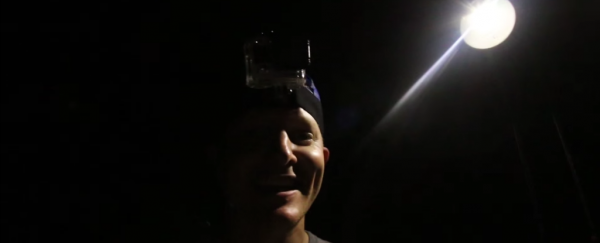
Most of us take the availability of artificial light well and truly for granted, but for those who are living off the grid, it's a constant consideration. Researchers around the world have been coming up with an array of amazing concepts for cheaply powered lamps, that run on soil nutrients; water and salt; or a magnet, copper coil, and battery. But one of the most promising inventions is the Gravity Light - it can produce light without the need for batteries, electricity or sunlight.
How does it work? Well, lucky for us, Destin from Smarter Every Day has decided to show us - in the middle of the pitch black Amazon rainforest, no less. It takes him mere seconds to set up, and all he needs to do is strap the thing to a tree and it suddenly lights up. And I'm not talking a faint glow - this is a really strong beam of light, and you can see immediately how useful it's going to be for families living in remote and developing communities.
Humans have been powering things with gravity for thousands of years - think giant cathedral clocks and pendulums - but harvesting electricity from gravity is a whole different ballgame.
As Destin explains, when we look at clocks that are powered by gravity, there are two important factors: they take a slow-moving object and speed up the movement using gears, and there's an escapement mechanism, which regulates the release of potential energy. We're about to see these same factors come into play in turning gravity into light.
Over at the Gravity Light headquarters, Destin gets to open one up and watch how it works without its outer casing. We can see that the weight takes about 20 minutes to fall, and somehow the device has to use that slow-moving object to move the DC generator fast enough to produce electricity and power the LEDs. This is where the gears come into play, and the solution of distributing the pressure among many different plastic teeth is genius.
But how do they solve the escapement problem? Why doesn't the weight just speed up until it hits the ground? I'll let Destin explain that one, because he's really on a roll, and he's got some super handy graphs to make the physics seem really simple. We can't wait to see how this new device could change everything for communities that should never have to worry about something as crucial as light.
